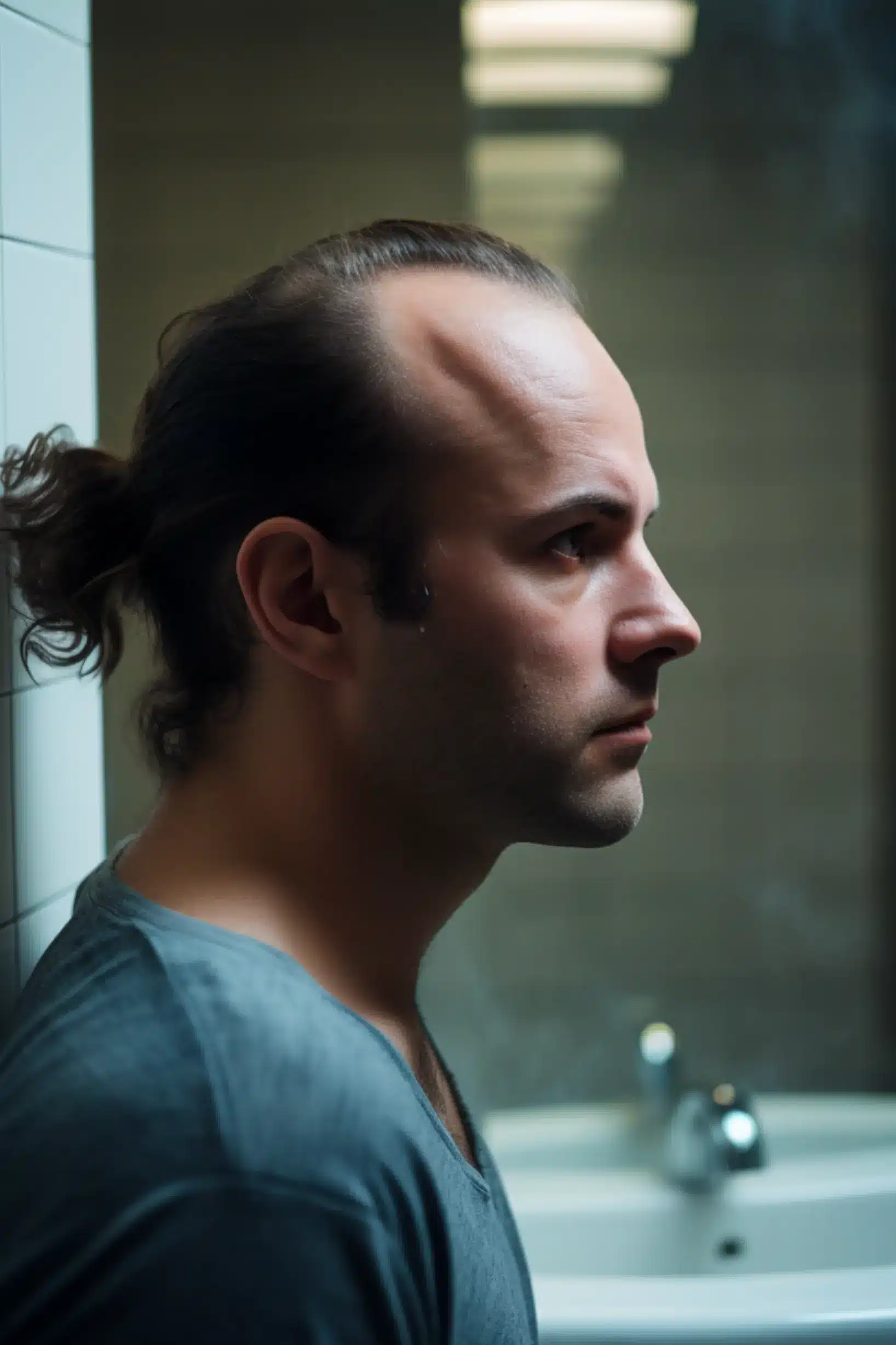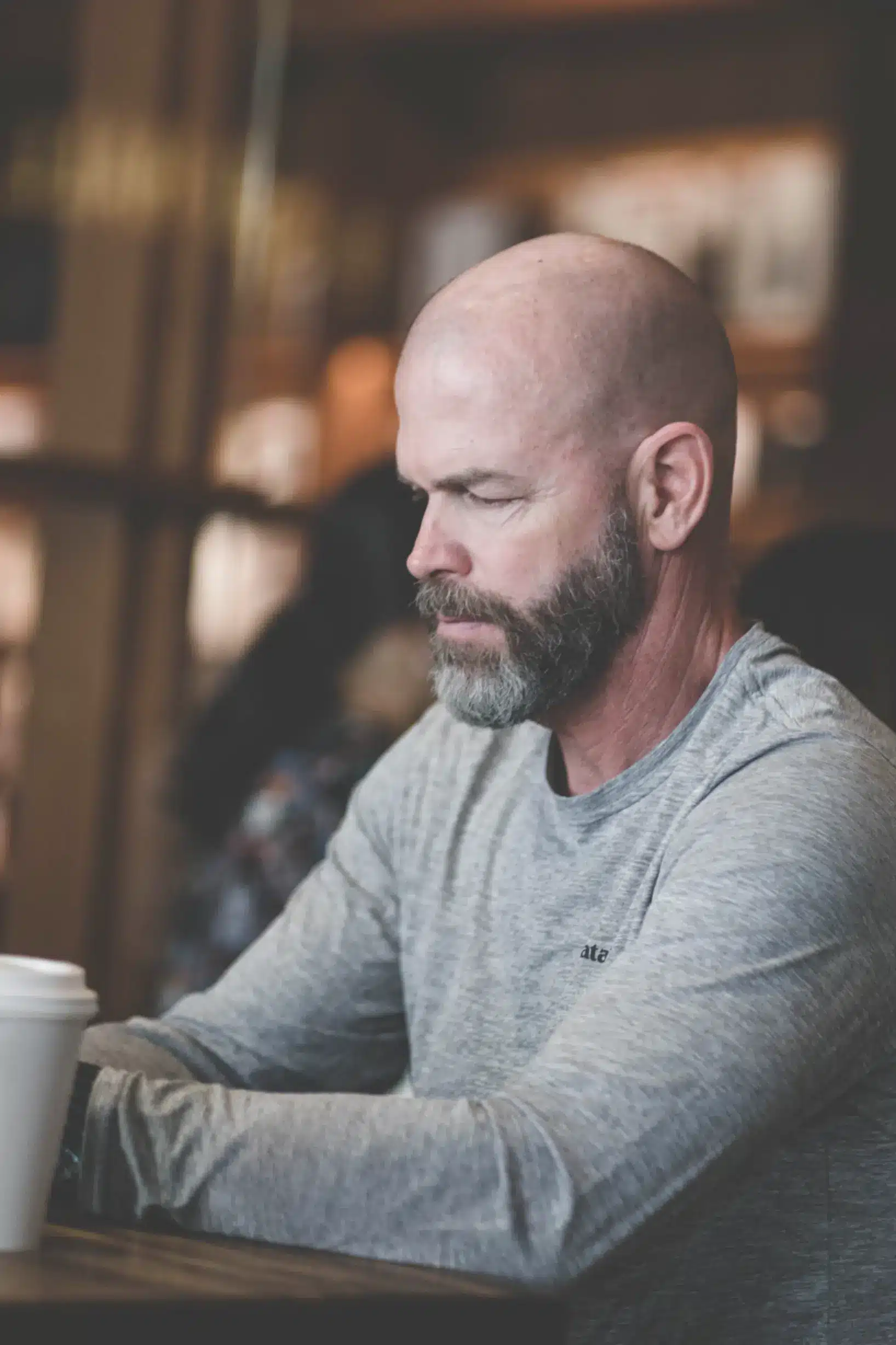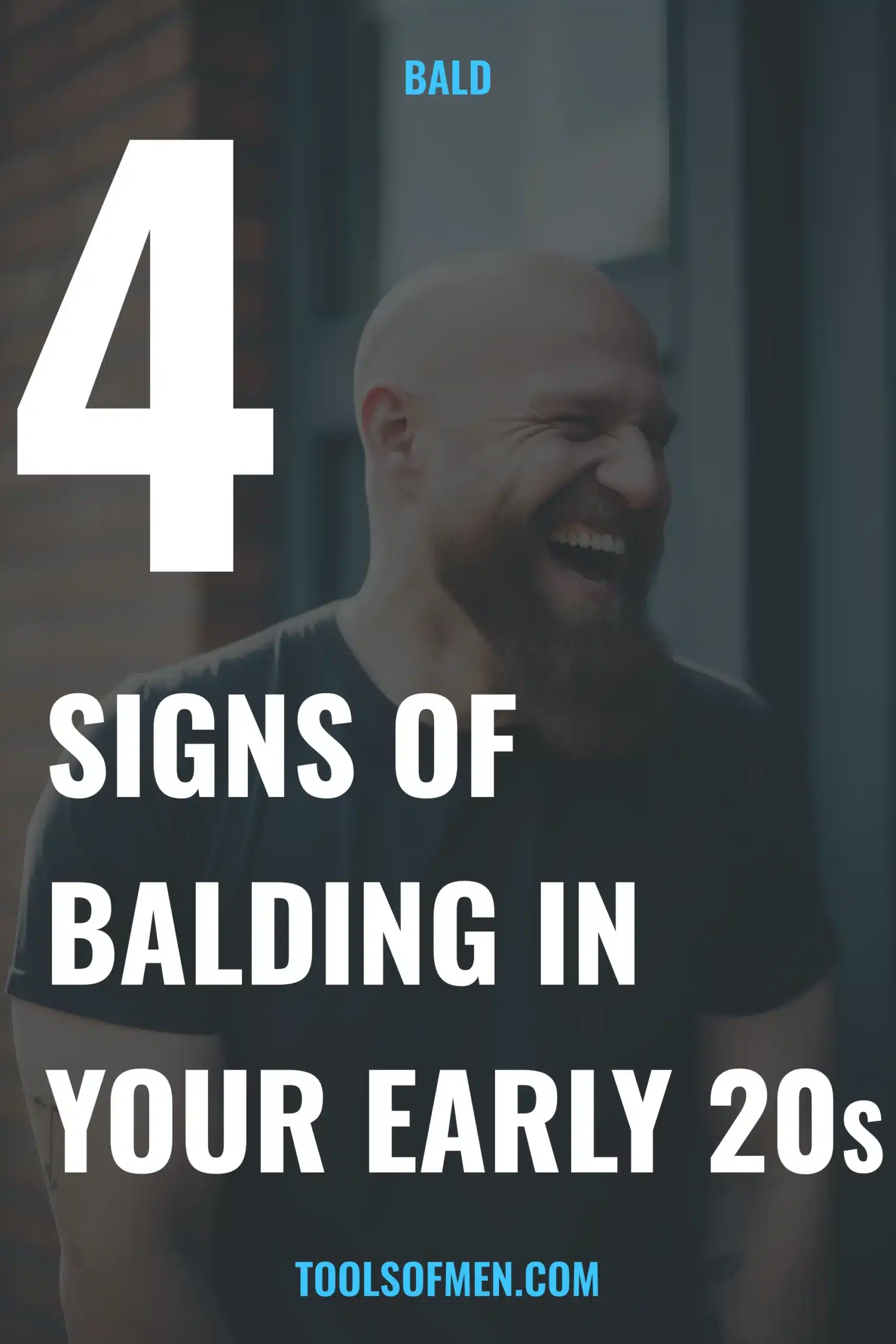Many people associate hair loss or balding primarily with aging. However, the onset of male pattern baldness can occur as early as one’s 20s.
The harsh reality of hair loss is that it’s often progressive and irreversible. Not to mention, that it can be quite damaging to one’s self-esteem and confidence, affecting all areas of personal, social, and professional life. Here are four main signs of early balding in your 20s:
Understanding the four signs of balding at 20 can provide a proactive approach to managing and possibly slowing down the process. Here are the key signs to watch out for:
1. Receding Hairline
The most common initial sign of balding is a receding hairline. This typically starts above the temples and moves towards the crown of the head, forming an M-shaped hairline over time. It’s important to note that as we age, it’s natural for the hairline to slightly recede. However, if the hairline recedes significantly and rapidly, this could indicate the onset of male pattern baldness.

Documenting changes in the hairline through pictures can be a valuable tool in tracking your head’s progression. It will provide tangible evidence and assist healthcare providers or trichologists (hair loss specialists) in making accurate diagnoses, if necessary.
2. Hair Thinning
Another sign of early balding is hair thinning. This can be either general thinning all over the scalp or localized thinning on the top of the head and around the crown. Men in their 20s might notice their hair isn’t as thick or voluminous as it used to be due to fewer hairs growing, or the individual strands being thinner. You might also notice more scalp visibility. Thinning hair comes in various patterns and can be compared to a ‘Christmas tree,’ with its wider part at the top of the head and gradually getting thinner towards the back.
There’s no concrete method to measure hair thinning at home, but a common technique used by dermatologists is the pull test. Hold about 60 hairs between your fingers and pull a little bit while running your fingers through your hair.
Normally, 5 to 8 hairs will come out — this is normal. An excess of 15 hairs, however, is not as common and could mean that you’re losing hair.
3. Changes in Hair Texture
As you age, once thick or coarse hair may begin to feel thin and soft. The texture of hair affected by DHT changes. This change is due to the miniaturization process of hair follicles, which is directly caused by the hormone dihydrotestosterone (DHT).

This miniaturization process results in finer, almost vellus-like hair, that is much shorter and lighter in color.
Vellus hair, often referred to as ‘peach fuzz,’ is the thin, light-colored hair that develops on the body before puberty. It is typically not as noticeable as the thicker, darker terminal hair that grows on the scalp, underarms, and pubic area.
Products like Rogaine work to transform these vellus hairs back into thicker, terminal hairs by prolonging the growth phase of the hair cycle, as they contain the ingredient Minoxidil, which is an FDA-approved treatment for hair loss.
Documenting is challenging as changes in hair texture can often be subtle and gradual. However, it may be helpful to pay attention to how your hair feels between your fingers or how it behaves with styling. If you notice that it gets oily or dirty quicker than before, or that it doesn’t hold a style as well, it may be a sign of changing texture.
4. Crown Balding
Aside from a receding hairline, one of the most noticeable and clear signs of early balding is thinning or balding at the crown of the head. This is often referred to as the ‘bald spot.’
Most men can typically feel this with their hands before they’re able to see it. The hair at the crown of the head begins to thin, leading to a wider part or even a circular bald spot. If you’re able to see the scalp easily through your hair or a circular bald spot, it could indicate the start of balding.
A handheld mirror or taking a picture with your phone can be helpful in documenting and tracking changes in this area. Over time, this bald spot may continue to increase in size, which could further indicate the progression of male pattern baldness.
Reasons for Early Hair Loss
Early hair loss can occur due to a multitude of factors, ranging from genetics to lifestyle choices. Here’s a look at some of the most common reasons:
- Genetics: Male pattern baldness is primarily caused by genetics. You might be at a higher risk if your father or any other male relatives in the family experienced hair loss at a young age even from your mothers side. The presence of an androgen receptor gene on the X chromosome that you inherit from your mother can also contribute to early male pattern baldness. Research has indicated that this gene plays a significant role in the miniaturization of scalp hair follicles, making them more susceptible to the effects of dihydrotestosterone (DHT). The American Hair Loss Association mentions that most men who suffer from male pattern baldness carry one or more copies of this androgen receptor gene.
- Hormonal Changes: Specifically, the hormone DHT is responsible for miniaturizing hair follicles, leading to the progressive shortening of the hair’s growth phase and the extension of its resting phase. Over time, this can result in hair follicles that are so small, they either cannot produce hair or the hair they produce is extremely thin and weak.
- Poor Nutrition: A diet lacking in essential nutrients like proteins, vitamins, and minerals can also lead to hair loss. Hair is primarily made of protein, so a protein-deficient diet can result in hair loss. Deficiency in essential vitamins like vitamins A, B, D, and E can also affect hair health. Vitamin D, in particular, plays a crucial role in the creation of new hair follicles, and a lack of it can cause hair loss or thinning.
- Stress: High-stress levels can lead to a variety of health issues, including hair loss. Stress can force hair follicles into the resting phase, which leads to hair shedding. This type of hair loss is usually temporary and resolves when the stress levels decrease.
- Medications: Certain medications and treatments can also cause hair loss, such as chemotherapy or medication for heart diseases, depression, high blood pressure, or arthritis. If hair loss is a side effect of a medication you’re taking, you may want to speak with your doctor to see if an alternative medication is available.
- Underlying Medical Conditions: Conditions such as thyroid disease, anemia, and protein malnutrition can cause hair loss. Autoimmune diseases like alopecia areata, where the immune system attacks hair follicles, can also lead to severe hair loss.
6 Treatments for Early Hair Loss

Realizing that you’re balding at 20 can be stressful, but there are several steps you can take:
- Understand That It’s Normal: While it may seem alarming, remember that experiencing hair loss in your early 20s is not as uncommon as you might think. Millions of men around the world experience similar circumstances.
- Consult a Hair Specialist: If you’ve noticed signs of early balding, it’s advisable to consult a professional, such as a trichologist or a dermatologist, who can provide an exact diagnosis.
- Consider Hair Loss Treatments: There are FDA-approved hair loss treatments available that you may wish to consider, such as minoxidil (Rogaine) or finasteride (Propecia).
- Maintain a Healthy Lifestyle: A nutrient-rich diet, regular exercise, and reducing stress can have positive effects on your hair and overall health.
- Think About Hair Restoration Procedures: If you’re comfortable with the idea, you may consider hair restoration procedures, such as hair transplants.
- Changing Shampoo & Conditioners: Some shampoos may contain hair-friendly ingredients like Biotin. These may be worth trying to see if they can spur on new growth.
Key Statistics about Balding

According to the Men’s Hair Loss Association, about 25% of men who are affected by male pattern baldness begin losing their hair before they reach the age of 21. This percentage increases significantly as men age, with approximately 66% of men experiencing some degree of hair loss by the age of 35.
In total, about 85% of men will have significantly thinner hair by the age of 50. Moreover, it’s important to note that male pattern baldness (MPB) can affect men regardless of their race or ethnicity. This condition is mainly driven by genetics and hormonal changes, specifically the conversion of testosterone into the hormone dihydrotestosterone (DHT), which causes hair follicles to shrink.
